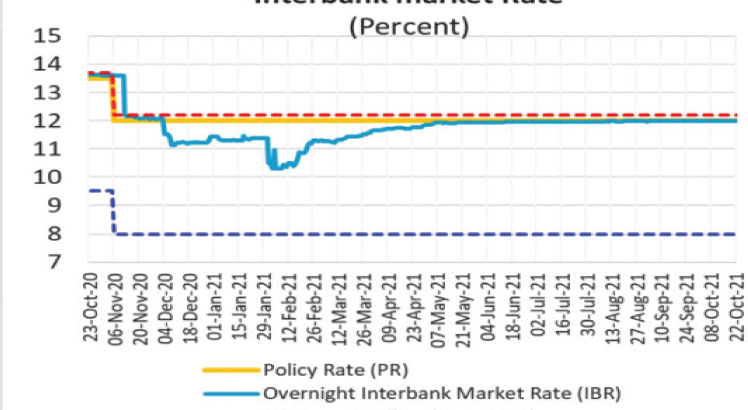Interbank borrowing up On tightening liquidity
The continued liquidity challenges in the domestic market faced by commercial banks on has pushed up borrowing between banks as banks struggle with funds availability, Reserve Bank of Malawi (RBM) figures show.
RBM figures contained in the weekly market development published on Monday show that liquidity conditions in the domestic money market in the week-ended October 22 remained tight.
According to the bank, trading on the interbank market increased to average K18. 7 billion per day from K10.5 billion per day observed during the week ended October 14.

The RBM data further shows that bank’s recourse to the central bank, as a last resort, barely changed as access on the Lombard facility — a discount window borrowing for stressed banks— averaged K53.4 billion per day compared to K71. 8 billion per day that was recorded during the previous week.
On the other hand, the daily commercial banks’ excess reserves, before borrowing from the central bank, averaged negative K53.7 billion compared to negative K36.0 billion recorded during the week ended October 14.
Explaining the situation Bankers Association of Malawi (BAM) has said the tight liquidity conditions in the banking system has lead to a significant decline of funds available for banks to meet liabilities.
BAM chief executive officer Lyness Nkungula in a written response to a questionnaire in context of the continued liquidity challenges said the tight liquidity situation could result in a slowdown in growth of credit both to the private sector and the public sector and could also keep Interest rates elevated.
She said: “Presently, RBM has been working with banks to manage the liquidity situation.
“Banks have also been fast-tracking innovative initiatives aimed at bringing the informal sector into the formal banking system and supporting businesses in their wealth creation efforts.”
Nkungula was, however, quick to mention that the Malawian banking system is still fundamentally robust with sufficient levels of liquidity to meet customer withdrawal requirements.
“Further, the liquidity situation is expected to improve as economic activity continues to recover and macroeconomic indicators such as the exchange rate and inflation rate stabilise,” she said.
Financial Market Dealers Association of Malawi (Fimda) president Mclewen Sikwese is on record as having said that to address the issue what is key is the approach that needs to be adopted by monetary authorities in managing the tightening liquidity conditions.
He said: “Considering we have a substantial amount of reverse repos anchoring the market, RBMs short to medium term plan in managing these exposures will define future state of the market’s liquidity.”
RBM Governor Wilson Banda at the last Monetary Policy Committee meeting indicated that the central bank will continue to take measures that will ensure economic recovery.
Meanwhile, the bank has maintained the policy rate at 12 percent to make borrowing cheaper and the Lombard Rate at 20 basis points above the Policy Rate to reduce the cost of funds for commercial banks.





